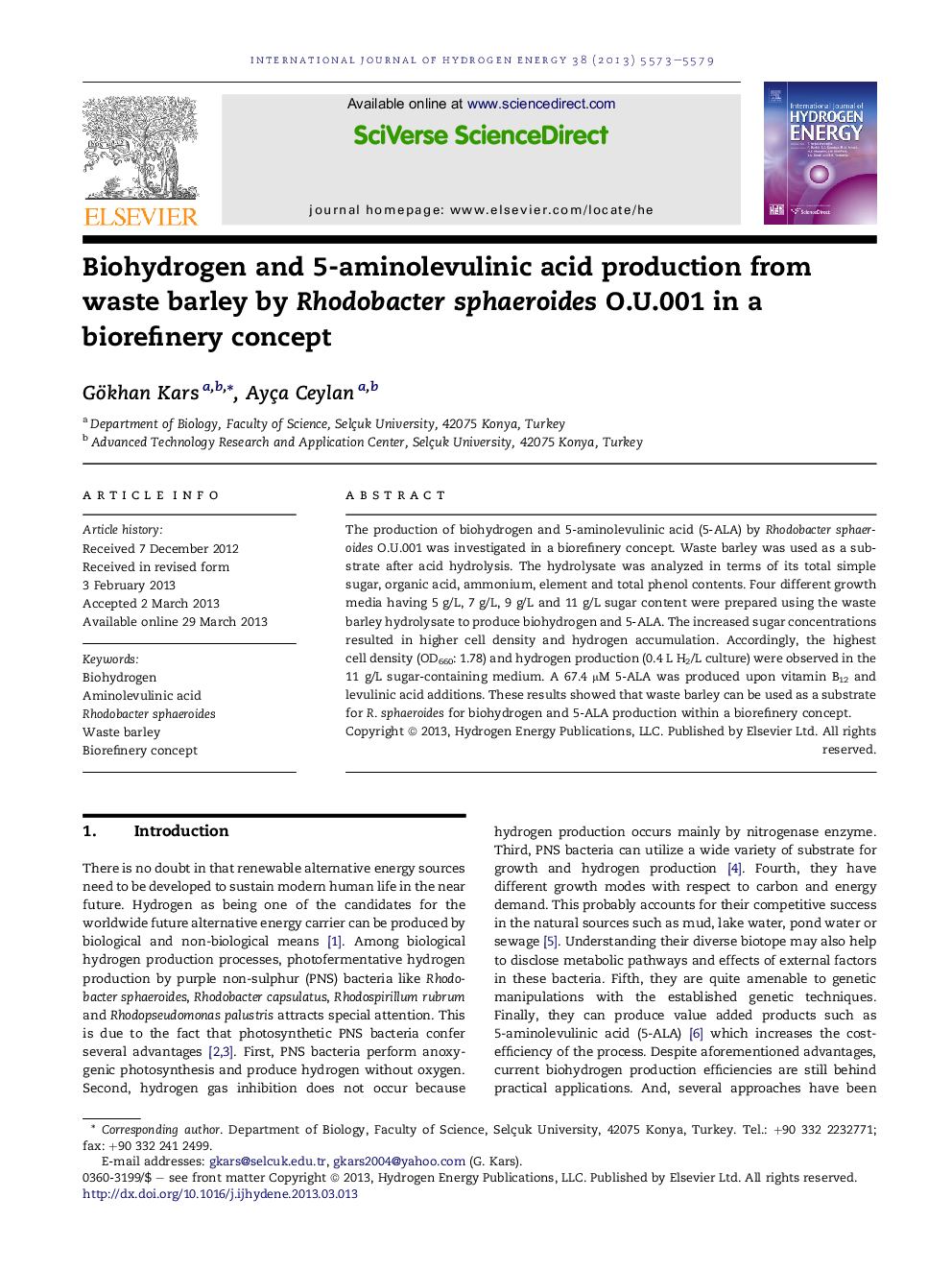| Article ID | Journal | Published Year | Pages | File Type |
|---|---|---|---|---|
| 1281666 | International Journal of Hydrogen Energy | 2013 | 7 Pages |
•Waste barley was used for hydrogen and 5-ALA productions in a biorefinery concept.•Waste barley was acid hydrolyzed and analyzed for several parameters before use.•Rhodobacter sphaeroides could successfully use waste barley hydrolysate as substrate.•Considerable amounts of hydrogen and 5-ALA were produced.•This study significantly contributes a recently developing biorefinery concept.
The production of biohydrogen and 5-aminolevulinic acid (5-ALA) by Rhodobacter sphaeroides O.U.001 was investigated in a biorefinery concept. Waste barley was used as a substrate after acid hydrolysis. The hydrolysate was analyzed in terms of its total simple sugar, organic acid, ammonium, element and total phenol contents. Four different growth media having 5 g/L, 7 g/L, 9 g/L and 11 g/L sugar content were prepared using the waste barley hydrolysate to produce biohydrogen and 5-ALA. The increased sugar concentrations resulted in higher cell density and hydrogen accumulation. Accordingly, the highest cell density (OD660: 1.78) and hydrogen production (0.4 L H2/L culture) were observed in the 11 g/L sugar-containing medium. A 67.4 μM 5-ALA was produced upon vitamin B12 and levulinic acid additions. These results showed that waste barley can be used as a substrate for R. sphaeroides for biohydrogen and 5-ALA production within a biorefinery concept.
